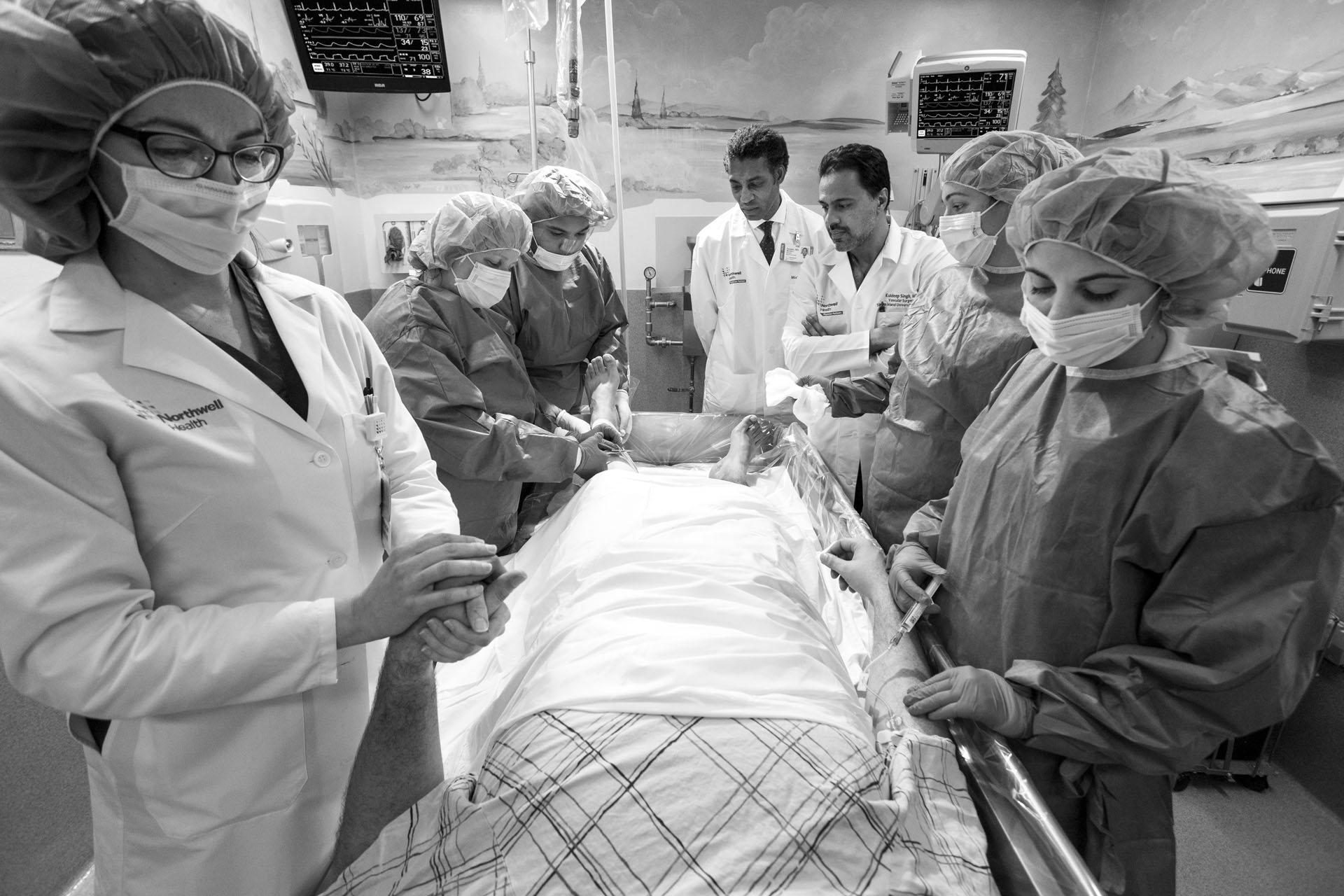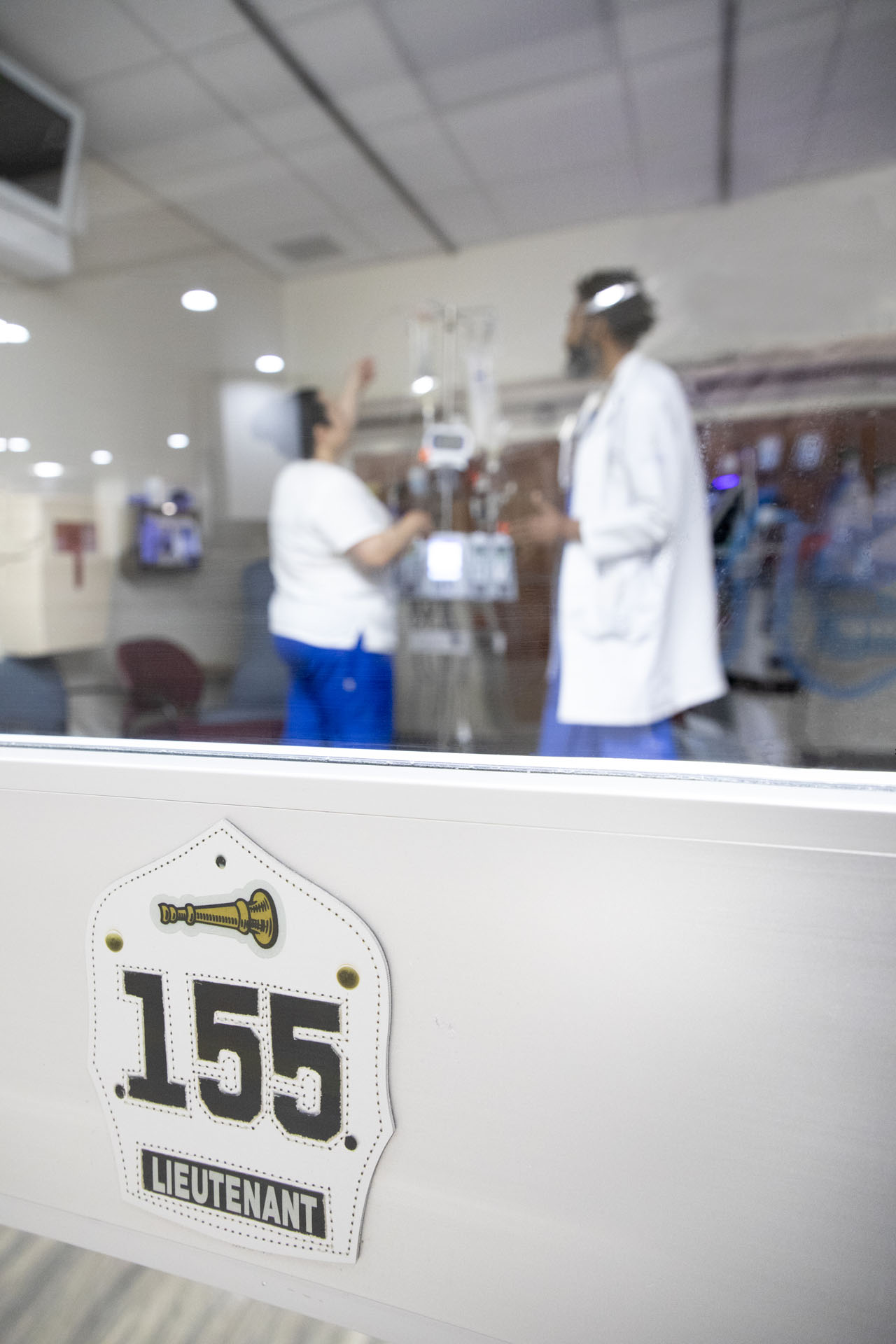LEADING BURN CARE AND PLASTIC SURGEON, THE DIRECTOR OF THE STATEN ISLAND UNIVERSITY HOSPITAL BURN CARE CENTER, DR. MICHAEL L. COOPER SHARES HOW COMPREHENSIVE EXPERTISE, TECHNOLOGICAL INNOVATION, AND PUBLIC AWARENESS ARE RESHAPING THE FUTURE OF BURN CARE
BY AMANDA MCCOY • PHOTOS BY AMESSE PHOTOGRAPHY

After 20 surgeries, a feeding tube, and several weeks of assisted breathing, a patient at Staten Island University Hospital Burn Care Center was finally discharged. Three months had passed since the young healthcare worker returned home from a long overnight shift and drifted into an unintended nap with a cigarette in hand. After severe burns and months of intensive treatment by Michael L. Cooper, MD, and his team, this patient was returning home, though she had not yet regained the use of her legs. Years later, Dr. Cooper can recall, “I had not seen her in a long while and one day she simply walked into my practice,” he said, recalling a surprise drop-in from the patient. With the staff seeing how far she had come, “There wasn’t a dry eye in the office.” Today that patient is driving, and she has been able to see her young daughter grow into a mature adult.
According to research published by the National Institutes of Health, burn injuries represent the most severe form of trauma. A serious burn is considered one of the most painful injuries a person could sustain, often requiring a protracted treatment course over many years that includes several complex surgeries, extensive physical training, counseling, and follow-ups.

“It can be a devastating injury,” noted Dr. Cooper, director of Northwell Health’s only dedicated burn unit. “Especially if a person suffers a burn to the hand or face, the chances they will return to a full life decrease dramatically. My philosophy is a burn does not define a person. Our goal at the Burn Care Center is to return our patients to a full, beautiful, functional life.”
Named after Dr. Cooper’s mentor, Dr. Jerome Finkelstein, Staten Island University Hospital’s Burn Care Center treats nearly double the national average – over 300 cases per year. A multidisciplinary team of critical care physicians, anesthesiolo-gists, physician assistants, nurse practitioners, nurses, physical trainers, and nutritionists all collaborate on site to offer special-ized care for each patient. “We are grateful for the continued support of SIUH’s leadership, which provides the support and resources to offer the best care for our burn and wound patients,” said Dr. Cooper. Dr. Cooper undoubtedly has the pedigree to lead as an American Board of Plastic Surgery-certified physician, but what truly drives his dedication and passion began with humble beginnings. Raised in a still segregated early 1960s Arkansas, Dr. Cooper experienced de-segregation first hand when the 1954-ruled decree finally made its way to the small town of Bytheville.

Among connecting with other classmen regardless of color, Dr. Cooper also had a fervor for medicine and anatomy, kindled by flipping through his mother’s nursing schoolbooks as an adolescent, eventually guiding him to pursue a medical degree at Cornell University’s Weill Medical College. It was there he was exposed to burn trauma, and after completing his residency at St. Vincent’s Hospital, he was selected for a prestigious, one-year fellowship in burn surgery and a two-year fellowship in plastic and reconstructive surgery at New York Hospital Weill Cornell Medical Center.
When his mentor, Dr. Jerome Finkelstein, approached the young physician about the new Burn Care Center at SIUH in the late ’90s to incept what is today the SIUH Burn Care Center, Dr. Cooper jumped at the opportunity. For the next 25 years, Dr. Cooper healed thousands of Staten Islanders from one of medicine’s most complex and traumatic injuries. His expertise also extends beyond the island and borders of the Northwell system. Working with Healing the Children, a nonprofit organization that when the 1954-ruled decree finally made its way to the small town of Bytheville. Among connecting with other classmen regardless of color, Dr. Cooper also had a fervor for medicine and anatomy, kindled by flipping through his mother’s nursing schoolbooks as an adolescent, eventually guiding him to pursue a medical degree at Cornell University’s Weill Medical College.
It was there he was exposed to burn trauma, and after completing his residency at St. Vincent’s Hospital, he was selected for a prestigious, one-year fellowship in burn surgery and a two-year fellowship in plastic and reconstructive surgery at New York Hospital Weill Cornell Medical Center. When his mentor, Dr. Jerome Finkelstein, approached the young physician about the new Burn Care Center at SIUH in the late ’90s to incept what is today the SIUH Burn Care Center, Dr. Cooper jumped at the opportunity. For the next 25 years, Dr. Cooper healed thousands of Staten Islanders from one of medicine’s most complex and traumatic injuries. His expertise also extends beyond the island and borders of the Northwell system. Working with Healing the Children, a nonprofit organization that usually heals on its own without a mark.”
There are times when the burn area is too large to cover with a single skin graft, explained the doctor, and in these cases, he might use skin from an organ donor to protect the tissue. This method, however, only provides temporary relief. “After removing the burn tissue, we don’t want to leave the area uncovered because it will become infected,” he said. “We place the donated skin for temporary coverage as it will decrease pain and heat and fluid loss, but the person’s immune system will eventually reject the skin. We continue to perform grafts from the patient’s own skin every two weeks until we can cover the entire area.”

Even after a treatment course is complete, cases of this severity often require lifelong care. Many patients must relearn certain movements or motor functions through physical therapy, and some have residual wounds or scars that demand ongoing attention. Burn scars can devolve into skin cancer over time, thus the team also conducts biopsies to scan for tumors or cancerous cells.
Looking ahead, Dr. Cooper delineated two driving forces behind the future of his specialty. On the clinical side, researchers are currently studying ways to grow skin in a lab, either synthetically or through a small sample of the patient’s own skin, which would eliminate the need to collect healthy tissue through a skin graft. A pivot to this technology would mean decreasing the length of stay in the hospital, decreas-ing both pain and chances of infection, and improving the cosmetics of a burn treatment. The second, and perhaps most significant, is reducing the impact of burn trauma through prevention in partnership with the Fire Department of New York. “The 4th of July used to be a very busy time for Burn Care Centers, but through education and better laws and regulation, physicians don’t see as many injuries on the holiday,” noted Dr. Cooper. “Devices like smoke and carbon monoxide alarms have severely reduced the number of incidents, as does increased public awareness.”
SIUH and FDNY have been critical partners in publicly sharing fire prevention and safety. Many Staten Island fire fighters who get injured on the job get serviced by Staten Island’s only Burn Care Center at SIUH. Dr. Cooper was also excited to share details on a soon-to-launch pilot program that’s intended to further improve burn care response in the Northwell Health system. Dubbed Teleburn, the program allows emergency care providers at other Northwell campuses to contact the Burn Care Center through secure video, and in real-time Dr. Cooper’s team will evaluate the wound and advise practitio-ners how to proceed. “Our goal is to ensure all our patients receive the best care,” he continued. “Whether you’re at Northshore Hospital or SIUH, the knowledge of the Burn Care Center can be accessed to serve patients.”
Technological advancements, along with prevention education and teaching the next crop of skilled doctors, is where Dr. Cooper envisions he’ll tackle the next 25 years in the SIUH Burn Care Center.
